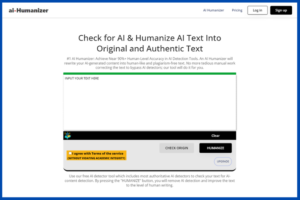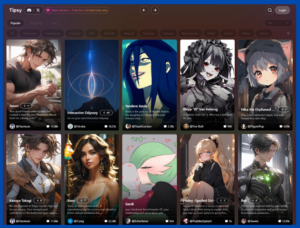Introduction
The world of AI image generation is moving at breakneck speed, and the latest development has everyone excited: PixArt-δ. This open-source framework not only produces stunning high-resolution images, but it does so in a fraction of the time it takes most other models.

PixArt-δ, an open-source image generator, has emerged as a strong contender against Stable Diffusion in the rapidly changing landscape. Created by researchers from Huawei Noah’s Ark Lab, Dalian University of Technology, Tsinghua University, and Hugging Face, PixArt-δ signifies a remarkable advancement in text-to-image synthesis. This cutting-edge framework not only offers faster inference speeds but also delivers superior high-resolution outcomes, differentiating itself from its predecessor and competing models.
PixArt-δ Features
Speed and Accuracy:
- PixArt-δ accelerates image generation by integrating the Latent Consistency Model (LCM) and ControlNet into the PixArt-α model.
- High-quality images with a resolution of 1,024 x 1,024 pixels are generated in an astonishing 0.5 seconds, marking a sevenfold improvement over PixArt-α.
- This model outpaces Stability AI’s SDXL Turbo, which produces 512 x 512 pixel images in just 0.2 seconds.
Resolution and Consistency:
- PixArt-δ’s results exhibit higher resolution and greater consistency compared to SDXL Turbo and a four-step variant of SDXL with LCM.
- Images generated by PixArt-δ display fewer errors, and the model demonstrates enhanced accuracy in following given instructions.
Efficient Training and Accessibility:
- The model is designed for efficient training on V100 GPUs with 32 GB of VRAM, completing the process in less than a day.
- Its 8-bit inference capability enhances usability, allowing synthesis of 1024-pixel images even on 8-GB GPUs, widening accessibility.
ControlNet Integration
Fine-tuned Control:
- The integration of the ControlNet module into PixArt-δ introduces a novel architecture tailored for transformer-based models.
- This enhancement enables finer control over text-to-image diffusion models using reference images, providing explicit controllability while maintaining high-quality image generation.
Open-Source Availability:
- The weights for the ControlNet variant of PixArt-δ have been published on Hugging Face, fostering transparency and encouraging community involvement.
Here are some of the key benefits of PixArt-δ
- Unmatched speed: Generate high-resolution images in just 0.5 seconds.
- Exceptional quality: Produce stunningly detailed and realistic images.
- Open-source: Tinker with the code and explore its full potential.
- Versatile: Create a wide range of image styles, from photorealistic to abstract.
- Accessible: Free to use and experiment with.
The Potential of PixArt-δ
The implications of PixArt-δ are vast. It has the potential to completely transform how we communicate, build things, and even produce art. Imagine having the ability to quickly create concept art for a game, illustrate your ideas, or add distinctive AI-generated graphics to your virtual environment. There are countless options.
Even though PixArt-δ is still in progress, the AI community is taking notice of it. It can democratize AI image generation and usher in a new era of creative expression thanks to its amazing speed, spectacular quality, and open-source design.
We’re excited to see what the future holds for PixArt-δ, and we encourage you to give it a try and see for yourself what this powerful tool can do.
Apart from the previously mentioned qualities, below are some additional intriguing features of PixArt-δ
- The algorithm produces pictures that are rooted in truth because it was trained on a sizable collection of actual photos.
- Because PixArt-δ can learn from user comments, it will continue to improve over time.
- Regardless of technical proficiency, the PixArt-δ team is dedicated to making the model available to everyone.
In the field of artificial intelligence image production, we think PixArt-δ has the potential to be revolutionary. We can’t wait to see where this cutting-edge technology will go in the future.
Conclusion
PixArt-δ represents a significant breakthrough in text-to-image synthesis by integrating precise control, speed, and resolution under a single framework. PixArt-δ, with its remarkable powers, not only rivals current models but also establishes a new benchmark for open-source picture producers. Future breakthroughs in the field of AI-driven picture synthesis are expected to be even more exciting as academics work to improve and expand upon existing technologies.
FAQs
1. What is PixArt-δ?
PixArt-δ is an open-source AI image generator that creates high-resolution images (1024×1024 pixels) in just 0.5 seconds. It’s faster and produces better quality images than many other models.
2. How does it work so quickly?
PixArt-δ combines the Latent Consistency Model (LCM) and ControlNet with the PixArt-α model. This optimized architecture significantly speeds up image generation while maintaining quality.
3. How does it compare to Stable Diffusion?
PixArt-δ produces images with a better resolution (1024 × 1024 vs. 512 x 512) in 0.5 seconds as opposed to 0.2 seconds.
4. Is it easy to use?
PixArt-δ is accessible even on 8GB GPUs thanks to its 8-bit inference capability. The model trains efficiently on V100 GPUs (32GB VRAM) in less than a day.
5. Can I control the image generation?
Yes! PixArt-δ integrates ControlNet, allowing you to fine-tune image results using reference images. This provides finer control over the creative process while maintaining high quality.
6. Is it free to use?
Yes, PixArt-δ is open-source, meaning anyone can use and modify its code. This promotes community involvement and fosters further development.
7. What are the potential applications of PixArt-δ?
The possibilities are vast! Use it for concept art, illustrating ideas, personalizing digital spaces, and much more.
8. Is it still under development?
Yes, PixArt-δ is constantly being improved. The team welcomes user feedback and is committed to making the model even better.
9. Where can I learn more?
The PixArt-δ weights for the ControlNet variant are available on Hugging Face. You can also find more information and updates on the project website or through the research paper.
10. What’s the future of AI image generation?
PixArt-δ represents a significant leap forward, but advancements are continuous. Expect further improvements in speed, quality, and controllability as researchers refine and expand upon existing technologies.





[…] about LogoFast, an innovative AI-powered logo creator that lets you generate beautiful logos right away without any design knowledge at all. This blog […]